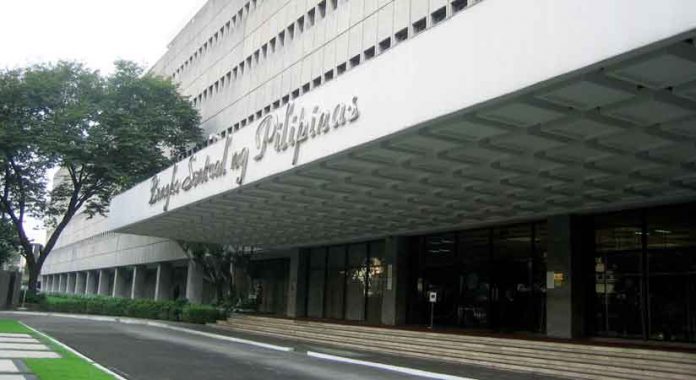THE balance of payments (BoP) surplus in 2020 was at a record $16.022 billion, swelled by proceeds from overseas debt which the government took on to help deal with the pandemic, with outflows also limited by the sharp drop in imports.
The BoP surplus exceeded the year-earlier total by 104%, according to the Bangko Sentral ng Pilipinas (BSP), which released the data late Monday.
The surplus significantly exceeded the forecast of $12.8 billion issued by the central bank in December.
The BSP said the surplus was driven by an increase in net foreign borrowing by the National Government coupled with the narrowing of the merchandise trade deficit. It added that remittances, foreign direct investment, and trade in services likewise contributed to the BoP surplus.
ING Bank NV-Manila Senior Economist Nicholas Antonio T. Mapa said the sharp rise in the surplus reflected lower demand for imports during the economic downturn.
“These developments hardly resemble a sign of increased investor confidence as foreign portfolio investment was actually in the red as foreign players dumped stocks and bonds given the ongoing recession and the steepest plunge in GDP (gross domestic product) numbers, ever,” Mr. Mapa said in an e-mail.
Short-term foreign investment, also known as hot money, posted a net outflow in 2020 of $4.24 billion, the highest since at least 2012, as investors sought safer havens during the global economic downturn. Philippine GDP recorded its deepest contraction since 1947, the first year the indicator was formally compiled. GDP retreated 9.5% in 2020 after rising 6% in 2019.
“The surplus reflects the government’s reluctance to spend despite incurred a sizable volume of loans from multilateral agencies to spend precisely for pandemic relief efforts,” he said. He also called spending on key imported goods needed to contain the pandemic “non-commensurate” to the need.
Government borrowing from domestic and foreign sources totaled P2.64 trillion last year, Finance Secretary Carlos G. Dominguez III said last month. Government spending in 2020 increased 11% to P4.205 trillion, missing the P4.233-trillion spending target.
The trade deficit in 2020 was $21.829 billion, narrowing from the year-earlier $40.67-billion deficit, following a 23.3% decline in imports to $85.6 billion.
In December, the BoP was in surplus by $4.236 billion, up 188% from November and up 169% from a year earlier.
“The BoP surplus in December 2020 reflected inflows mainly from the BSP’s foreign exchange operations and income from its investments abroad, and the national government’s foreign currency deposits with the BSP of proceeds from its issuance of global bonds,” the central bank said.
On the other hand, payments made on foreign currency-denominated debt obligations served to dampen growth in the surplus that month, it added.
Gross international reserves (GIR) of $110.12 billion at the end of December, up 5% from the end of November.
“This is equivalent to 11.8 months’ worth of imports of goods and payments of services and primary income,” the BSP said, noting GIR represents ample levels of liquidity to buffer the economy against external shocks.
It added that the GIR level is equivalent to about 9.5 times short-term external debt, based on original maturity and 5.4 times based on residual maturity.
This year, the BSP projects a BoP surplus of $3.3 billion.
“We may more likely see a narrowing of the BoP surplus according to the government’s target, but it may take a while to see a pick up in import performance and return to pre-COVID levels,” UnionBank of the Philippines, Inc. Chief Economist Ruben Carlo O. Asuncion said in a text message.
Government officials are hopeful that the economy will recover with growth of between 6.5% and 7.5% this year. — Luz Wendy T. Noble

